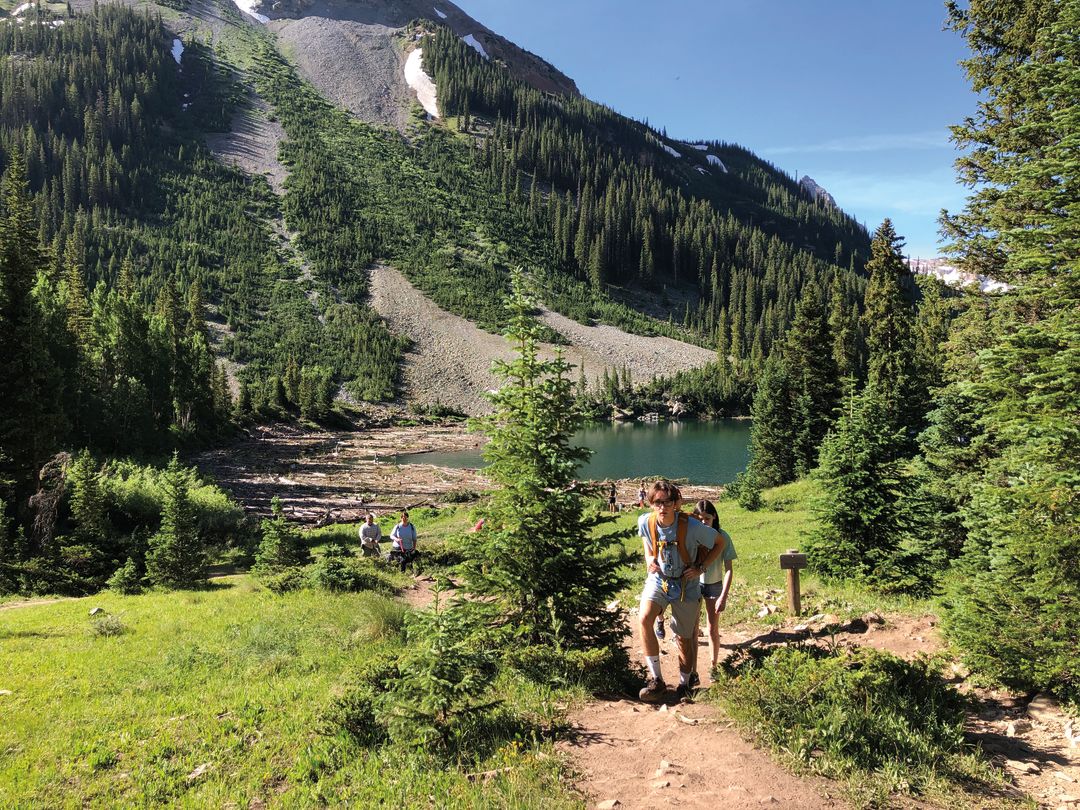Take a Walk on the Wet Side

On the Maroon Lake to Crater Lake trail
Image: Jordan Curet
pick a hiking trail in the Roaring Fork Valley, and chances are at least part of it will involve water, especially these staff favorites.
The Rio Grande Trail (rfta.com/trail-information), named for the railroad this wide, easy multiuse trail was built upon, parallels the Roaring Fork River for most of its 42 miles from Aspen to Glenwood.
A short hike complete with rock scrambling, a waterfall, and caves, the Grottos is an easy 0.6-mile loop—perfect for families with young kids. You’ll spend more time hanging out by the rushing upper Roaring Fork than hiking. The trailhead is about 10 miles east of Aspen on Highway 82; look for it about a mile past the Weller Lake trailhead.
Probably the busiest trail in the valley, the 3.6-mile hike from Maroon Lake to Crater Lake and back must be mentioned for the sheer beauty of its end points. Maroon Lake reflects the iconic Maroon Bells in its crystal pure waters, and Crater Lake is an aquamarine alpine postcard. The hike itself rises about 500 feet over a rocky trail and through aspen groves. Reservations (aspenchamber.org) are required to access this area by bus or private vehicle.
High up in the Castle Creek Valley 12 miles south of Aspen, the Cathedral Lake Trail climbs around 2,000 vertical feet in 2.8 miles, with Pine Creek cascading down the steep canyon it roughly follows. Cathedral Lake itself is a stunner, its waters shifting from aqua to emerald depending on the light.
Following rushing Snowmass Creek through aspen forests and crossing it once, the Maroon-Snowmass Trail reaches Snowmass Lake in 8.3 miles; this larger alpine jewel is framed by 13,000- and 14,000-foot peaks.
And the 8.8-mile Lost Man Loop (not really a loop, but the trailheads are not far from each other on Highway 82 east of Aspen) follows two river drainages and passes three beautiful alpine lakes—including the beginning trickle of the Roaring Fork River and its source, Independence Lake.



















































